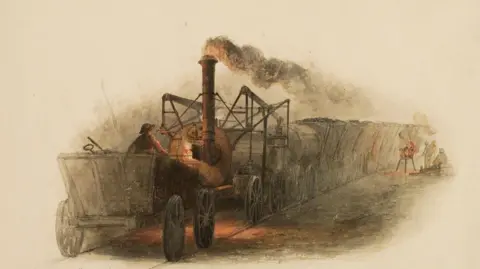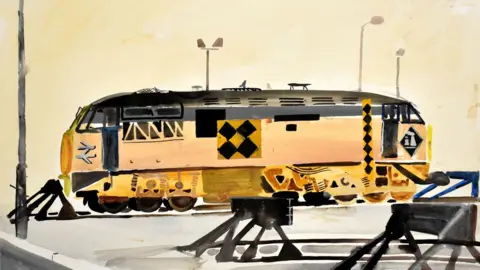Anniversary show celebrates mining and railway
 Hatton Gallery, Newcastle University
Hatton Gallery, Newcastle UniversityPaintings spanning two centuries are set to explore the link between mining and the emergence of steam engines in the North East.
Two hundred years ago, the first journey was made on the Stockton and Darlington Railway, the world's first, permanent public railway.
The anniversary is being celebrated with an exhibition of paintings from across the region, which capture how steam engines revolutionised mining, industry and, ultimately, shaped the world.
Anne Sutherland, heritage curator at The Auckland Project, said: "Our new exhibition highlights the inextricable link between coal mining and the railways - two forces that powered the industrial age and shaped communities for generations."
"The Stockton and Darlington Railway was more than just an engineering marvel, it was born from necessity," said Ms Sutherland.
Fuelling the Railway Revolution opened at Bishop Auckland's Mining Art Gallery on Friday.
It features paintings from local, contemporary artists, as well as important works such as Thomas Harrison Hair's watercolour sketch, Old Locomotive Engine, Wylam Colliery.
Dating from around 1838–1842, the sketch is said to represent an era of experimentation at Wylam Colliery in Northumberland, when the coal mines of the north-east were at the forefront of railway technology.
Puffing Billy, the first new steam engine - built at Wylam Colliery around 1813 - remains the oldest surviving steam locomotive in the world, and remains on display at London's Science Museum.
 Robert Soden/Mining Art Gallery
Robert Soden/Mining Art GallerySunderland painter Robert Soden, two of whose works were recently acquired as part of the Mining Art Gallery's permanent collection, said the collection of paintings helped "tell the story of a region whose industry and innovation shaped the modern world".
"When I first moved to Sunderland, I was struck by the sheer visual spectacle of the pits and the diesel engines hauling long trains of coal wagons along the North Sea coast.
"The rumble, the rattle, the foghorn and sea fret created an unforgettable atmosphere that inspired much of my work."
The exhibition runs until December, with tickets available on The Auckland Project's website.
